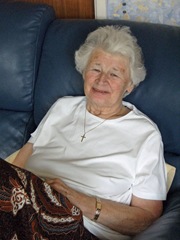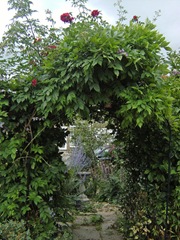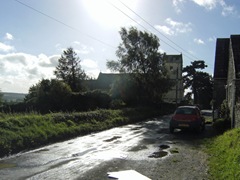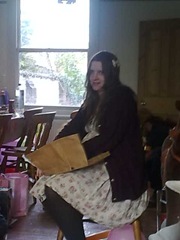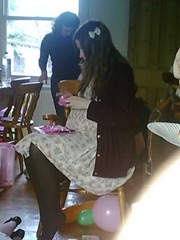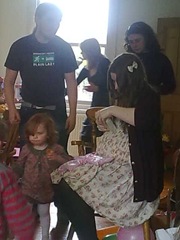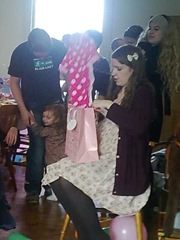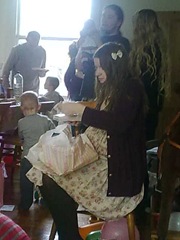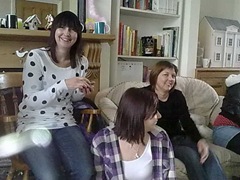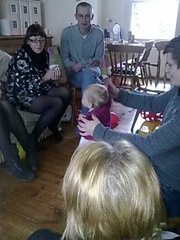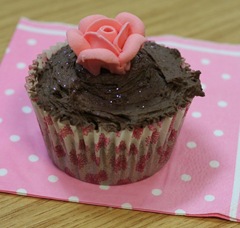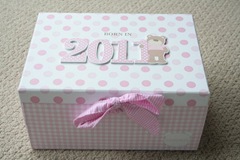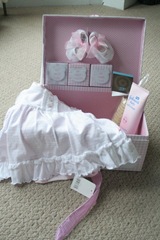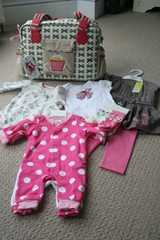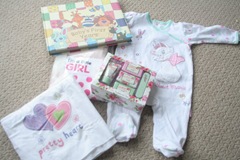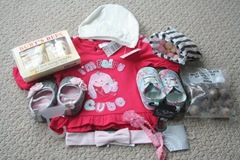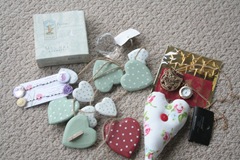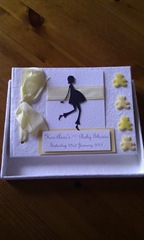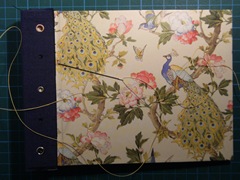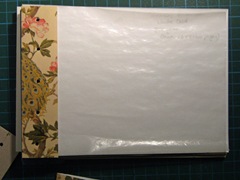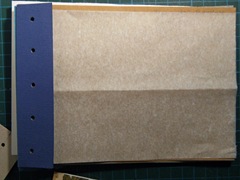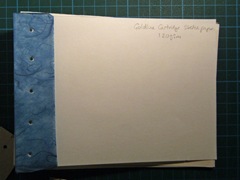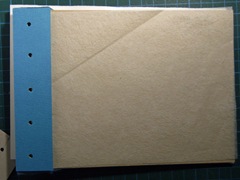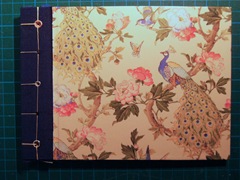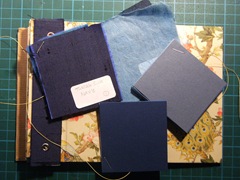Hello all, I mentioned a little while ago, that I make my own bookcloth for bookbinding and that I use a fairly simple method that has recently been “discovered” by many in the Bookbinding Community. It’s not my own idea, but one that was passed on by others, and as it’s common knowledge (so nobody’s “property”), I think it’s fine to pass it on again!
A few people have asked about this and I thought I would make a tutorial. This is quite a long tutorial, as I wanted to cover everything, but the method is actually very straightforward.
I have used lots of photos, to make it as clear as I can. I hope you find it useful.
* * *
Background Information
Traditional Bookcloth is made using some kind of glue to stiffen and strengthen, or fix a fine paper to the back of, the book-covering fabric. The reason for doing this is that fabric, fixed to the book boards by itself, would stretch unevenly, possibly fray and probably not look very good. By coating it with a special glue, or backing it with paper, the fabric is stabilised – it won’t stretch or fray – and will stick smoothly to the supporting cover boards.
However, making bookcloth with old-fashioned “wet” glues is not very easy. The glue can soak through the fabric, spoiling its appearance. If you miss a bit, you can end up with bubbles on the surface of your book cover. Traditional glues can be vulnerable to attack from insects, who like to munch on it (it’s made of wheat or rice starch)! It also needs a while to dry out before it can be used.
Kristin Crane, a bookbinder from Rhode Island, with a lovely
shop on Etsy, wrote a very clear, concise tutorial about making bookcloth using the wet glue method -
find it here. (in fact, I should perhaps take a leaf out of her book - I don't seem to be able to write "concise" blog posts about anything!).
The Traditional methods do still have a big place in Bookbinding and it would be very sad to lose these tried and tested methods of working, which (when done skilfully) produce high quality products that last for years and years. However, for many projects, the old paste method of making bookcloth doesn’t have to be used. So long as the materials used are of “archival” quality – ie. acid free / neutral ph, so that the glue, fabric and paper used doesn’t attack the book inside the cover – more modern adhesives can be used with great success.
This method uses a modern, dry adhesive, which comes in the form of a fine web of glue, which has been sprayed onto a parchment paper support. It is commonly used in making clothes, quilting, applique and for repairs, as it gives even adhesion and strength. It is also pretty much invisible from the front – a big advantage – and does not fray at the edges, which means it is helpful for fiddly little bits of fabric, or those that are soft and fray easily.
You can use almost any close-weave fabric that you choose for your book-binding projects. Suitable fibre types are linen, cotton, poly-cotton, rayon, polyester or silk. Nylon and polyamides are not really suitable for this heat-bonded technique, though you should be able to use them as covering material for a book, if you attach a backing paper with glue (you could try a spray craft-adhesive for this).
It is worth trying out this method on a test-piece of your fabric, before committing to the whole piece, just to be sure it will work out.
Be aware, however, that there are a number of specialist bookbinding supply companies, who offer ready-made bookcloth, in a wide range of types and colours, at reasonable prices. Many of these accept orders over the internet. If you are not making the bookcloth for aesthetic reasons, it may be as cheap to purchase it ready-made. You should be able to obtain samples of your possible choices, before committing to a larger purchase.

This material is known as “Wonder web, Bondaweb or Wonder Under”, depending on where you live (it has lots of other names in languages other than English, but I don’t know those!).
You can buy it in haberdashery, dressmaking, fabric or craft stores. It’s usually sold by the metre or yard; the pieces I buy are 46cm / 18” wide. It can easily be cut to size, with sharp scissors and can be stored rolled up with its paper backing still attached. However, the lady in my local shop tells me it doesn’t store well for long periods, so only buy what you will need in the next couple of months.
I had asked what it would cost to buy a roll of the stuff. Her response rather put me off that idea, as a full roll is pretty long and I wouldn’t use it up very quickly.
I was further put off by the cost – over £100 a roll! By the metre / yard, it’s more affordable – mine cost me £3.95 a metre, but it may well be cheaper elsewhere.
This does add extra cost to your projects – if you are making things to sell, do remember to add this into your calculations, as well as the cost of the actual fabric, remembering that most fabrics are wider than 46cm/ 18” (although you only need to make as much bookcloth as you need for your project, cutting fabric and Bondaweb to size).
I also save money on fabrics, by buying “Fat Quarters” at my local quiltmaking suppliers (a “Fat Quarter” is where a yard/metre of fabric is cut from the roll, then cut across and vertically, to make four quarter-yards/metres – as opposed to cutting straight across the whole width of the fabric at quarter-yard/metre intervals). This gives me nice, almost square pieces of fabric at reasonable cost, which are more than enough for my projects.
Just a further note. I was initially offered a slightly different product, as the Bondaweb was out of stock. When I looked at it, I decided not to use it, as the “web” of adhesive was actually formed in a small grid pattern. I thought this might well show through some of my fabrics, giving a raised pattern to the bookcloth. The Bondaweb is very fine and this problem would not arise. There may be similar products available, but I would suggest you check the density of the glue and make certain it is acid-free/ archival quality before you buy it.
* * *
Method

Cut your Bondaweb and fabric to size, allowing enough for your project and including any hems/edges that you need to fold over your boards etc.
Lay it adhesive-side down / paper side up, over the back of your fabric, on a heat-proof, smooth surface. If you can’t use an ironing board, use a worktop or table, protected with a piece of heat-proof blanket or a few thick cotton tea-towels.
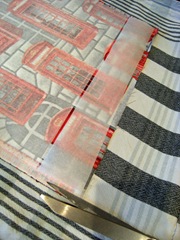
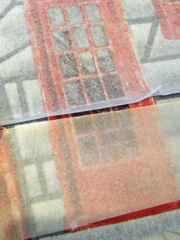
If your piece of Bondaweb isn’t big enough, you can add an extra strip.
Once the first piece is attached, run a finger nail under the edge of the backing paper, to lift it slightly,
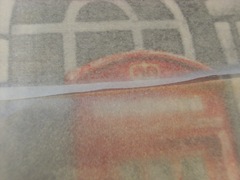
then push the new piece just under this edge, so you won’t have any gaps.
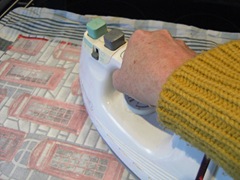
Use an iron at the hottest setting for your fabric (remember that cotton and linen can take a much hotter iron than rayon, polyester or silk).
Press the iron onto the backing paper, which will fix the Bondaweb in place at this point; you can then iron over the rest of the paper, keeping the iron moving, so that you don’t burn the materials.
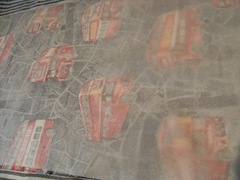
This photo shows the Bondaweb half-done. The left-hand area is attached – you can see the back of the fabric quite clearly; the right side has not been ironed yet, so it’s still cloudy. You’ll be able to see where the glue has been melted by the iron, so you can go over any cloudy bits again.

Let it cool down, then test the corner, to make sure the backing will peel off easily.
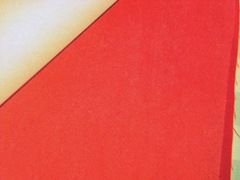
Detach the backing paper by peeling it away. Normally it will peel off in one big sheet. Occasionally you’ll get a bit that rips away, but it should come off if you gently scratch it with your finger nail. The backing paper is good as a non-stick surface for projects, or as “glueing paper”, so don’t throw it away.
If you look closely at the photo above, you can see the darker red edge of fabric, where there is no glue – the Bondaweb has left a thin, white coating of adhesive over the back of the fabric.
* * *
Backing the Bookcloth
You need to back your cloth with a firm, strong, but fine and lightweight paper. Use paper that is finer and lighter than your fabric, or you will end up with a heavy and unusable bookcloth.
Please note that the kind of tissue papers used as gift-wrap, packaging etc is not suitable for bookcloth. First and foremost, the majority of these papers are acidic and the acid in them will attack your fabric, causing discolouration. Secondly, they have no strength and are likely to collapse once you start to work with the bookcloth.
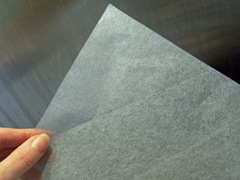
I use a fine Thai mulberry tissue, like this one:
http://store.falkiners.com/store/product/2415/Khadi---Thai-Mulberry-TP1/
or this:
http://store.falkiners.com/store/product/2139/Bib-Tengu-jo-12gsm/ – this is my favourite, and is the tissue shown in these photographs.
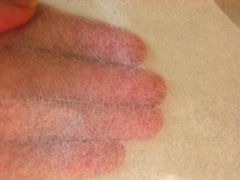
As you can see from the photo, the paper is very thin and almost transparent. However, it is also quite strong and durable.
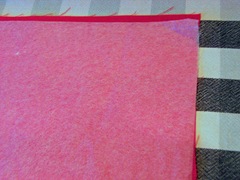
Cut the tissue to size and lay it on top of the glue layer on your fabric. Try not to leave any glue uncovered, as it will stick to your iron.
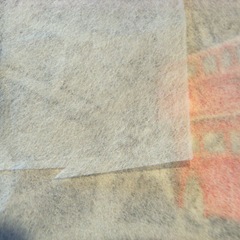
If there is a bare patch, you could lay a small piece of the tissue paper over this. Let it overlap very slightly, to avoid sticky problems and holes in your bookcloth backing.
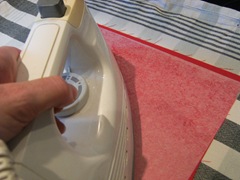
Once again, use a hot iron, at the highest temperature possible for your fabric type, to activate the glue and adhere the backing tissue to the fabric.
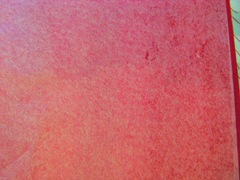
The darker areas on the photo are where the glue has activated and bonded the paper. The cloudy parts are where it hasn’t been ironed over yet.

The paper will be stuck firmly to the fabric, forming a nice firm bookcloth. This can be cut with sharp scissors, folded and creased. You can apply glue to the back – carefully and not too wet – to stick it to your book boards, though sometimes, especially with silks, I prefer to glue the boards, then carefully lay the bookcloth on top, to avoid the glue soaking through to the front.
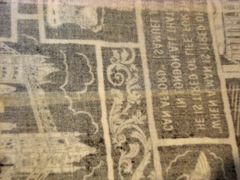
There is a tiny overlap here, where I had to cut two pieces of paper to fit the fabric. This can be trimmed with very sharp scissors; however I generally find that it doesn’t show on the front, as the fabric is closely woven and the tissue paper very fine.

Finally, remember to clean your iron after use. You may have adhesive on it, which will transfer to anything else you iron – potentially causing a lot of damage. If you plan on making heat-bonded bookcloth, buy a good cleaner for your iron sole-plate. Alternatively, buy a new iron and commandeer the old one for your craft room!
* * *
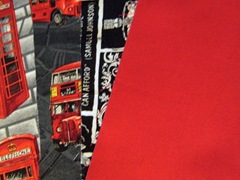
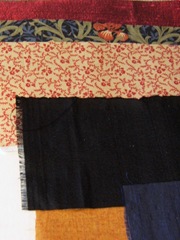
Finished bookcloth pieces. All these were made by the bonded method described in this tutorial. I have used many of these pieces very successfully in my bookbinding.
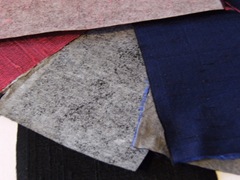
Fronts and backs of some silk bookcloth. You can not see the adhesive on the front of the silk. It also does not fray (as I found out when I tried to make my favourite frayed-edge quarter binding!).
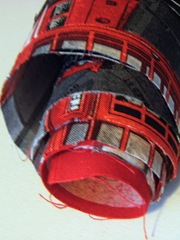
Store your bookcloth flat, or loosely rolled. Do not roll it tightly, squash it, or fold it, as you will spoil it. As with paper, folded creases will not come out!
* * *
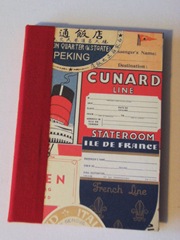
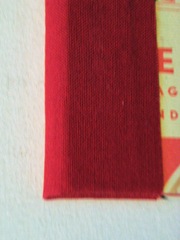
Red cotton bookcloth, used as a “quarter-binding”, with a contrasting paper on the cover-boards.

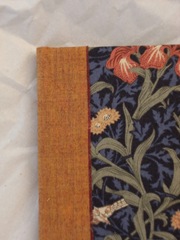
Cotton and silk bookcloths, used to make bindings for some diaries this Christmas. The yellow cotton was woven with golden thread in one direction and red in the other, giving a lovely and interesting effect. I frayed the edge to show this off.
* * *
I hope that this tutorial will be useful to someone. I have enjoyed writing it – hopefully you’ve enjoyed reading it too!


















